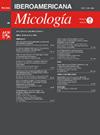异唑康唑的药理相互作用。
IF 1.6
4区 生物学
Q4 MYCOLOGY
引用次数: 0
摘要
患者在任何给定时间接受的各种药物之间的相互作用对于证明治疗的合理性至关重要,特别是考虑到与它们相关的通常严重的副作用。这些相互作用对唑类抗真菌药物特别重要,如伏立康唑、氟康唑、泊沙康唑和伊曲康唑。最近上市的唑类药物isavuconazole因其对多种CYP450酶和转运蛋白的抑制作用较低而脱颖而出。虽然它可以诱导CYP450超家族的一些同工酶,但其影响很小。因此,我们可以得出结论,它与其他药物的相互作用不太明显,这减少了调整治疗或剂量调整的需要。此外,isavuconazole具有高的口服生物利用度、广泛的分布体积和明显长的消除半衰期。所有的唑类药物都有一个显著的副作用,但与异唑康唑无关,那就是QTc间隔的延长,这有时会导致角扭转的风险。这些优点使得isavuconazole成为使用多种药物的患者首选的抗真菌药物。本文章由计算机程序翻译,如有差异,请以英文原文为准。
Pharmacological interactions of isavuconazole
The interactions between the various drugs a patient receives at any given time are crucial for justifying treatments, especially considering the often severe adverse effects associated with them. These interactions are particularly significant for azole antifungals, such as voriconazole, fluconazole, posaconazole, and itraconazole. The most recently marketed azole, isavuconazole, stands out due to its lower inhibitory effect on various CYP450 enzymes and transport proteins. While it can induce some isoenzymes of the CYP450 superfamily, its impact is minimal. As a result, we can conclude that its interactions with other drugs are less pronounced, which reduces the need for treatment adjustments or dose modifications. Additionally, isavuconazole boasts high oral bioavailability, an extensive volume of distribution, and a notably long elimination half-life. A significant side effect common to all azoles, but not associated with isavuconazole, is the prolongation of the QTc interval, which can sometimes lead to the risk of Torsades de Pointes. These advantages make isavuconazole the preferred antifungal choice for patients on multiple medications.
求助全文
通过发布文献求助,成功后即可免费获取论文全文。
去求助
来源期刊

Revista Iberoamericana De Micologia
MYCOLOGY-
CiteScore
1.90
自引率
0.00%
发文量
17
审稿时长
81 days
期刊介绍:
Revista Iberoamericana de Micología (Ibero-American Journal of Mycology) is the official journal of the Asociación Española de Micología, Asociación Venezolana de Micología and Asociación Argentina de Micología (The Spanish, Venezuelan, and Argentinian Mycology Associations). The Journal gives priority to publishing articles on studies associated with fungi and their pathogenic action on humans and animals, as well as any scientific studies on any aspect of mycology. The Journal also publishes, in Spanish and in English, original articles, reviews, mycology forums, editorials, special articles, notes, and letters to the editor, that have previously gone through a scientific peer review process.
 求助内容:
求助内容: 应助结果提醒方式:
应助结果提醒方式:


